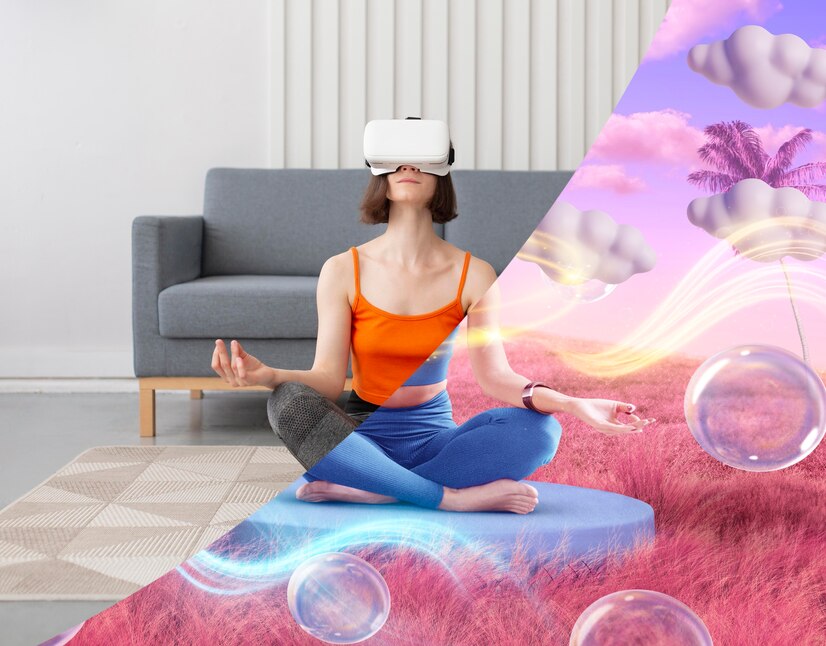In recent years, the intersection of technology and mental health has paved the way for innovative approaches to therapy. Among these, virtual reality (VR) has emerged as a promising tool with the potential to revolutionize mental health treatment.
This blog delves into the realm of virtual reality and its applications, exploring the benefits that make it a compelling contender as the future of mental health treatment.
Understanding Virtual Reality in Mental Health
Virtual reality is a computer-generated simulation that immerses individuals in a three-dimensional environment. While traditionally associated with gaming and entertainment, VR has found its way into various fields, including healthcare.
In mental health treatment, VR serves as a therapeutic tool by creating immersive experiences that simulate real-world scenarios or offer a controlled environment for therapeutic interventions.
Enter Virtual Reality in Mental Health Treatment
Virtual reality, once primarily associated with the gaming and entertainment industries, is now making significant strides in healthcare, including mental health treatment. This immersive technology involves the use of computer-generated environments to simulate real-world experiences. By leveraging VR, mental health professionals can create controlled and therapeutic environments to address a range of mental health issues.
Benefits of Virtual Reality in Mental Health Treatment
- Exposure Therapy for Anxiety and PTSD
One of the most well-established uses of virtual reality in mental health is exposure therapy. This technique is particularly effective in treating anxiety disorders and post-traumatic stress disorder (PTSD). Virtual reality provides a safe and controlled environment where individuals can confront and process their fears or traumatic memories. This controlled exposure can lead to desensitization and gradual reduction of anxiety symptoms.
- Enhanced Engagement and Retention
Traditional therapeutic approaches often struggle with engagement and retention, especially among younger populations. Virtual reality, with its immersive and interactive nature, captivates the user’s attention and enhances their overall engagement in the therapeutic process. This heightened engagement can contribute to better treatment outcomes.
- Social Skills Training
For individuals with social anxiety or autism spectrum disorders, virtual reality offers a platform for social skills training in a controlled setting. Users can practice social interactions, gradually building confidence and improving their ability to navigate real-world social situations. This application of VR aligns with the broader trend of technology-assisted interventions in mental health.
- Pain Management and Distraction
Beyond psychological disorders, virtual reality has demonstrated effectiveness in managing physical pain and discomfort. Patients undergoing medical procedures or chronic pain sufferers can use VR as a distraction tool. By immersing themselves in a virtual environment, individuals can shift their focus away from pain, potentially reducing the need for pain medication.
- Accessible Therapy Options
Accessibility remains a significant hurdle in mental health treatment. Many individuals face challenges in accessing therapy due to geographical limitations, financial constraints, or social stigma. Virtual reality can bridge these gaps by providing remote therapy options. This not only increases access to mental health services but also allows individuals to receive treatment in the comfort of their own environment.
- Customization and Personalization
Virtual reality platforms allow for the customization of therapeutic experiences based on individual needs. Therapists can tailor virtual scenarios to address specific phobias, triggers, or challenges faced by their clients. This level of personalization enhances the effectiveness of the treatment, as it directly targets the unique aspects of each individual’s mental health concerns.
- Real-Time Monitoring and Feedback
Virtual reality platforms equipped with sensors can provide real-time monitoring of physiological and behavioral responses during therapy sessions. This data enables therapists to assess the effectiveness of interventions and make adjustments as needed. Additionally, the feedback obtained from virtual reality sessions can contribute valuable insights into the progress of the treatment.
- Empowering Individuals
Virtual reality empowers individuals to take an active role in their mental health treatment. Through interactive exercises and simulations, users can develop coping mechanisms, problem-solving skills, and a sense of mastery over challenging situations. This empowerment fosters a positive therapeutic alliance and encourages individuals to proactively engage in their mental health journey.
Challenges and Considerations
While the potential benefits of virtual reality in mental health treatment are substantial, it is essential to acknowledge and address the challenges associated with its implementation.
- Cost and Accessibility: High-quality VR equipment can be expensive, limiting its accessibility for some individuals. Moreover, not everyone has access to the technology required for virtual reality therapy, potentially creating disparities in mental health care.
- Ethical and Privacy Concerns: The collection of sensitive data within a virtual environment raises ethical and privacy concerns. Therapists and developers must prioritize the security of patient information and establish clear guidelines for data handling and storage.
- Integration with Traditional Approaches: Virtual reality should be viewed as a complementary tool rather than a replacement for traditional therapeutic approaches. Integrating VR into existing mental health frameworks requires training for therapists and a careful balance to ensure a holistic and effective treatment plan.
- User Comfort and Motion Sickness: Some individuals may experience discomfort or motion sickness during virtual reality sessions. Developers need to consider user comfort and design interventions that minimize potential side effects, ensuring a positive and therapeutic experience.
Conclusion
In conclusion, virtual reality holds tremendous potential as a revolutionary tool in the field of mental health treatment. The benefits discussed, ranging from exposure therapy for anxiety to improved accessibility and customization, underscore the transformative impact that VR can have on mental healthcare.
As technology continues to advance, it is essential for mental health professionals, researchers, and policymakers to collaborate in harnessing the full potential of virtual reality to enhance the well-being of individuals facing mental health challenges. The future of mental health treatment may very well be shaped by the immersive and therapeutic power of virtual reality.







